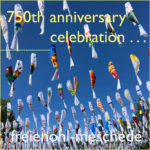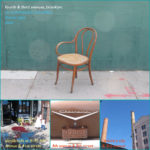i.f. stone, steve reich & kronos quartet . . .
i.f. stone, steve reich & kronos quartet . . .
soliloquy: from how it happens | kronos quartet | 1991 |
steve reich & kronos quartet | different trains:
america, before the war . . .
steve reich & kronos quartet | different trains:
europe, during the war . . .
steve reich & kronos quartet | different trains:
america, before the war | europe, during the war | after the war
&
steve reich, pat metheny & kronos quartet | different trains:
fast | slow | fast . . .
.
.
.
excerpts from notes on the music by scott johnson composer:
soliloquy | from how it happens | 1991 |
“how it happens” is based on the sampled voice of maverick american journalist
i.f. stone, whose idealistic and democratic vision of advancement for the human race was kept sharp by a no-nonsense reporter’s eye, an intellectual’s sense
of history, and a delight in subversive humor. to me, stone seems to have been cut from the same cloth as that strain of independent american composers who view their parent culture with both love and disappointment, turning these conflicting feelings into an engine driving their efforts.
in stone’s own words (taken from 1980’s npr radio broadcasts), “how it happens” chronicles the collision between humanity’s new-found technological power and
an ancient inheritance: our tribal impulse to band together and do violence against strangers, who are themselves following identical urges. written in 1991-94,
while the resurgence of religious and ethnic conflicts eroded the optimism that accompanied the end of the cold war, this piece often seems to prefigure today’s headlines. as globalization insures the collision of previously isolated cultures
and religions, stone’s meditations on the mixed legacy of our species grow ever more incisive, and his call to replace superstition and blood ties with reason and humanism grow ever more urgent . . .
. . . stone’s expressive and animated voice reinforced the first observations i made when i began to work with recorded speech: the desire to convince someone of something seems to accentuate the musicality of human speech. people engaged in personal persuasion or public rhetoric speak with a wider pitch and dynamic range, exaggerating nuances like the consistently pitched low pedal points that project certainty and authority, or the rising contours of uncertainty or questioning: listen to a newscaster, a salesperson, a member of the clergy, a child. i suspect that a formalized exaggeration of speech patterns had a large part to play in the origins
of melody among early humans; but unfortunately sounds leave no fossils . . .
.
.
.
dies war ein vorspiel nur, dort, wo man bücher verbrennt,
verbrennt man auch am ende menschen.
.
.
.
that was but a prelude; where they burn books,
they will ultimately burn men as well.
.
.
.
the german text above is a quote from heinrich heine’s
tragedy, almansor, written in 1821 . . .
heinrich heine | * 1797 † 1856 |
.
.
.
please note: the image above is an adaptation from:
karel martens’ book, printed matter . . .
posted 9 November 2022
© visualsyntax. powered by wordpress.









